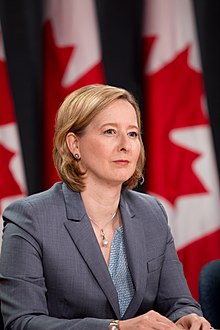 Central banks around the world have been cutting rates. But, so far, the Bank of Canada has avoided joining that club.
Central banks around the world have been cutting rates. But, so far, the Bank of Canada has avoided joining that club.
One of its worries is that lower interest rates would reignite the mortgage and housing markets, adding to Canadians’ already toppy debt loads.
Deputy BoC Governor Carolyn Wilkins reiterated these concerns in a speech yesterday.
“You’ve heard us say for a while now that Canada’s biggest domestic financial vulnerabilities are the high level of household indebtedness and imbalances in the housing market,” she said.
Not only has Canada avoided the “hard landing in housing that many had feared,” but Toronto and Vancouver home prices are still 40 percent higher than they were in 2015, she added. Mortgage growth is also picking up.
“Many of the same ingredients that were present in some housing markets three years ago—namely strong underlying demand, tight supply and low interest rates—are present again,” she said.
And while Wilkins believes regulatory changes and other measures will support the quality of new credit, she warns, “this is not the time to let our guard down.” You can bet that mortgage regulators are listening.
The Case for Rate Cuts
Despite the risks, the BoC may be overstating the impact that rate cuts would have on housing, according to Derek Holt, VP & Head of Capital Markets Economics at Scotiabank.
“…the BoC is too fussed about the pass-through argument of rate cuts into mortgages and housing markets and there is a stronger case for cutting the policy rate,” he wrote.
Holt said the “horse has left the barn on easier mortgage conditions.” In other words, fixed rates have plummeted in 2019, which has already led to greater mortgage demand.
“So, at this point cutting a couple of times probably wouldn’t induce a flood of variable-rate demand,” he continued.
 For perspective, two BoC cuts would likely take the lowest variable rates down to 2.44% nationwide, give or take 10+ basis points. Such a rate would still be in the vicinity of the best 5-year fixed rates, so yes, Holt is probably right that the extra floating-rate demand would be minimal.
For perspective, two BoC cuts would likely take the lowest variable rates down to 2.44% nationwide, give or take 10+ basis points. Such a rate would still be in the vicinity of the best 5-year fixed rates, so yes, Holt is probably right that the extra floating-rate demand would be minimal.
Of course, if traders think initial cuts are a sign of more to come, bond yields could drop too. That would pull fixed rates down as well, stoking overall mortgage demand—especially if banks finally lowered their 5-year posted rates (which dictate the minimum “stress test” rate).
That aside, easing rates would “remove a kink at the front-end that makes it over a quarter-point more expensive to borrow for working capital requirements than [longer] 2-5 year periods,” Holt wrote.
“Cutting would ease corporate financial conditions a bit and soften the Canadian dollar in the face of serious risks to global trade…”
Will Poloz & co. listen? If inflation expectations falter and unemployment starts climbing, they’ll probably have to.
As we speak—and this is a moving target—the market is fully expecting one 25-bps BoC cut next year.

 log in
log in